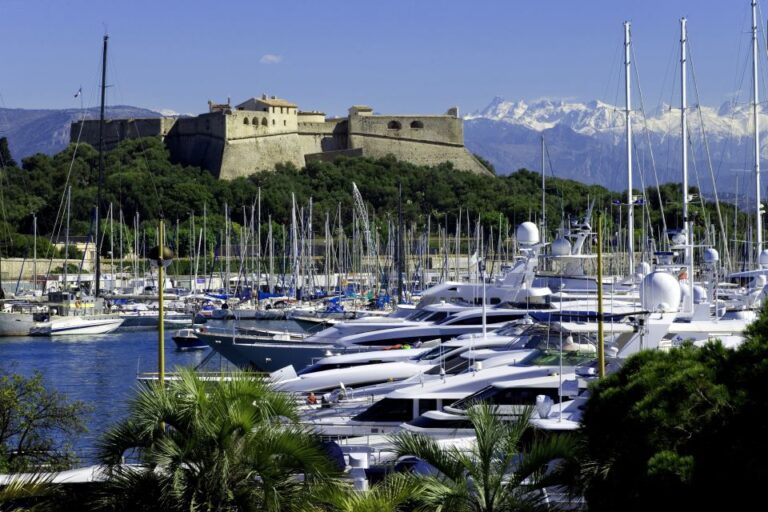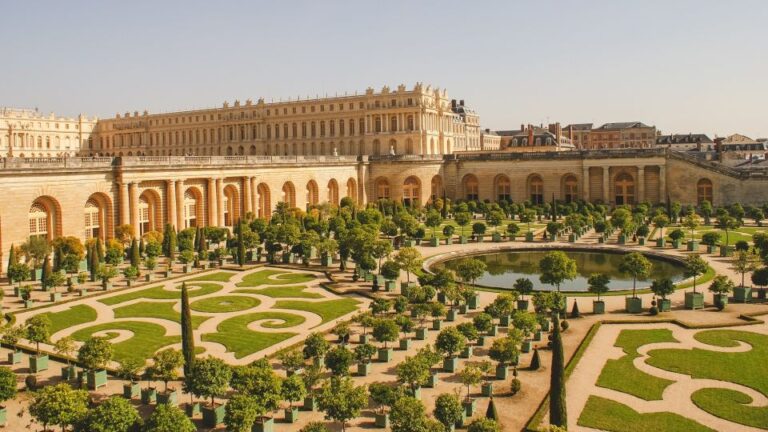The Cathédrale Saint-Pierre-et-Saint-Paul de Nantes, or simply the Cathedral of Nantes, is one of the most significant historical structures in the city. This stunning cathedral is open to the public free of charge, making it a must-visit attraction for anyone exploring Nantes.
A Cathedral with a Long History
The Cathedral of Nantes stands on a site with a long and eventful history. The current structure is built on the location of a previous cathedral constructed in the 6th century, which itself was erected on the site of an even earlier 3rd-century chapel. This original chapel was built to house a nail believed to be from the cross of Saint Peter.
Throughout the centuries, the various structures that have stood on this site have suffered damage from enemy invasions, fires, explosions, revolutions, and wars. Despite these challenges, the Cathedral of Nantes has endured and continues to be a significant landmark in the city.
Gothic Architecture and Intricate Details
The Cathedral of Nantes that you see today is a beautiful Gothic structure, its pale exterior a testament to the skill and dedication of the craftsmen who worked on it over the course of 450 years. The construction of the cathedral was finally completed in the 19th century, with the addition of finishing touches.
Interior Features
As you step inside the cathedral, you’ll be struck by the pale interior, which serves as a stunning backdrop for the many decorative features that adorn the space. Some of the most notable elements include:
- Colorful Stained Glass Windows: The vibrant stained glass windows stand in stark contrast to the light-colored walls, adding a beautiful pop of color to the interior.
- Ornamented Vaulted Ceilings: Look up to admire the intricately designed vaulted ceilings, a hallmark of Gothic architecture.
- Detailed Masonry Work: The entrance of the cathedral features exquisite masonry work, showcasing the skill and attention to detail of the craftsmen who created it.
- Dramatic Bronze Chandeliers: The cathedral is illuminated by impressive bronze chandeliers that add to the overall grandeur of the space.
- 17th-Century Balcony Stairwell: A beautiful balcony stairwell dating back to the 17th century is another notable feature of the cathedral’s interior.
- Historic Organs: The cathedral is home to several organs, including the 19th-century Choir Organ and the 17th-century Main Organ, both of which contribute to the rich musical heritage of the space.
Paintings and Artworks
Along With its architectural features, the Cathedral of Nantes also houses a collection of paintings spanning several centuries. One notable example is a 21st-century triptych of the Nativity by contemporary artist Alain Thomas, which adds a modern touch to the historic surroundings.
Extraordinary Funerary Monuments
One of the most striking features of the Cathedral of Nantes is the presence of two extraordinary sculpted funerary monuments, each with its own unique history and significance.
Tomb of General de La Moricière
In the left transept of the cathedral, you’ll find the 19th-century cenotaph honoring Nantes-born General de La Moricière, who served as the Minister of War and leader of the Papal army. This impressive “empty tomb” was designed by architect Louis Boitte and features stone columns and bronze statues representing the four essential virtues: Charity, Courage, Faith, and Wisdom. The tomb was sculpted by Paul Dubois, showcasing the remarkable talent of 19th-century French artists.
Tomb of Duke Francis II of Brittany
The right transept of the cathedral is home to the massive and ornate 16th-century tomb of Duke Francis II of Brittany and his wife, Margaret of Foix. This impressive monument was commissioned by their daughter, Anne of Brittany, and also holds the remains of Margaret of Brittany, the Duke’s first wife.
The tomb is surrounded by marble statues created by renowned sculptor Michel Colombe, depicting angels, saints, and four sentry-like statues representing the cardinal virtues: Justice, Strength, Temperance, and the two-faced Prudence. The effigies, or gisants, of the Duke of Brittany and Margaret of Foix rest atop the tomb, adding to the overall grandeur of the monument.
For a unique perspective, climb the stairs to the platform overlooking the tomb, which offers an interesting view from above.
Exploring the Crypt and Cathedral Treasures
Venture beneath the choir to discover the crypt and the Treasures of the Cathedral. The crypt is divided into two sections, each with its own unique history and purpose.
The High Crypt
The oldest section of the crypt, known as the High Crypt, dates back to the 11th century. This area holds the precious artifacts and sacred items that make up the Cathedral Treasury, offering visitors a glimpse into the rich religious heritage of Nantes.
The Low Crypt
The Low Crypt, which dates to the 19th century, contains an exhibit that explores the history of the Cathedral of Nantes. This informative display provides context and background for the various features and elements that you’ll encounter throughout the cathedral.
Visiting the Cathedral of Nantes
Location and Access
The Cathedral of Nantes is located at 7 impasse Saint-Laurent, just a short 4-minute walk from the Castle of the Dukes. Its central location makes it easy to incorporate a visit to the cathedral into your Nantes itinerary.
Admission and Guided Tours
Admission to the Cathedral of Nantes is free, making it an accessible and budget-friendly attraction for all visitors. While you can explore the cathedral on your own, guided tours are also available for those who wish to learn more about the history and significance of this remarkable building. Check with the cathedral’s visitor information for tour schedules and availability.
Surrounding Attractions and Activities
The Cathedral of Nantes is situated in the heart of the city, close to many other notable attractions and points of interest. After your visit to the cathedral, consider exploring some of these nearby sites:
- Castle of the Dukes of Brittany: This impressive castle, located just a short walk from the cathedral, offers a fascinating glimpse into the history of Nantes and the region of Brittany.
- Jardin des Plantes: The botanical garden of Nantes is a beautiful green space that provides a peaceful respite from the bustling city streets. Enjoy a leisurely stroll through the gardens and admire the diverse collection of plants and flowers.
- Memorial to the Abolition of Slavery: This powerful memorial, located along the banks of the Loire River, honors the victims of the slave trade and celebrates the abolition of slavery in France. The memorial features a thought-provoking series of sculptures and installations that invite reflection and contemplation.
- Passage Pommeraye: This stunning 19th-century shopping arcade is a must-see for architecture and design enthusiasts. The elaborate decor and unique layout of the passage make it a true gem of Nantes.






